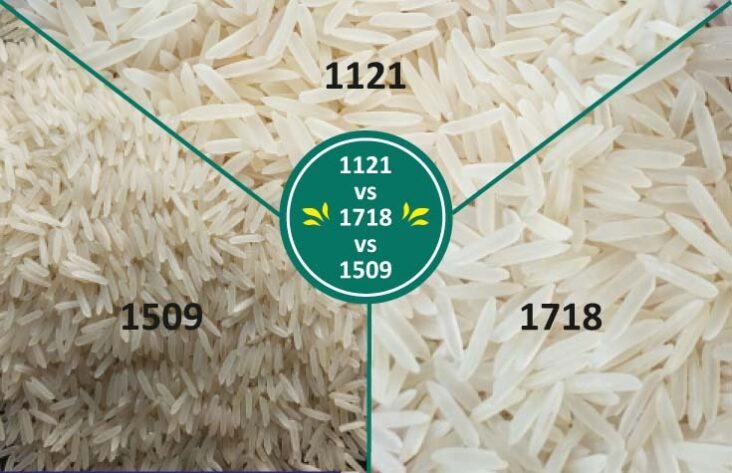1121 vs 1718 vs 1509 Basmati Rice

Basmati is a type of fragrant and aromatic rice having grains of length over 6.5 mm. They are conventionally grown in most regions of India, Pakistan, Bangladesh and Nepal. India is said to be the world’s largest basmati rice producer because it produces over 70%. There are varieties of basmati grains available for sale and marketing. Their main difference lies in their smell, location, width and length.
Distinction among rice types 1121, 1718 and 1509
Rice Pusa 1121
Pusa 1121 is considered one of the best variety of basmati rice grown in our country. It is produced by the strenuous process of hybridization. The size of each grain is about 8.4 mm. This makes it the longest ever released cultivar in the world. 1121 has stronger grain as compared to 1718 & 1509 and that’s why it is slightly fatter. Its elongation ratio ranges from 2 to 2.5 times of exercise.
The basmati variety Pusa 1121 was released for commercial cultivation by IARI in the kharif season of 2003. It gained popularity because it requires less water and is insensitive to light. Another good feature is that it can produce 19-20 quintals of rice.
Rice Pusa 1718
Pusa 1718 was developed aiming to fight the blight disease that affects the rice yield. It was developed by genetic modification over Pusa 1121. Since spraying fungicides and pesticides leaves residue over the final yield, it becomes harmful for consumption.
Since their crop length is small, they remain partially unaffected by strong rains and hailstorms. They also produce more yield and mature faster than the variety 1121.
Rice Pusa 1509
This variety of rice was developed by the Indian Agricultural Research Institute. It is the first kind to mature within 120 days (Pusa 1718 takes 140 days and 1121 takes 165 days). Its record highest yield advantage was over 50%. It requires less water to generate yield and is highly advantageous for growth in regions like Delhi. It can save up to 5 to 6 irrigations of water. Another better advantage of this variety is that it can produce better gains for a farmer. Since the plant sizes about 95-100 cm, it generates less biomass than Pusa 1121.
Conclusion
Research regarding the varieties of basmati rice by IRAI has generated more yield in less time and also has decreased the amounts of pollutants and diseases affecting. Pusa 1509 has till now been one of the major yields developed. Although considering length wise, 1718 & 1509 are both 8.40 mm, wherein 1121 is 8.35 mm. Pusa 1121 requires 60 days of plantation, whereas 1718 & 1509 requires only 30 days. 1121 & 1718 grains are off white in color, whereas 1509 is slightly greyish grain. But in terms of cooking 1121 is still a better choice.

